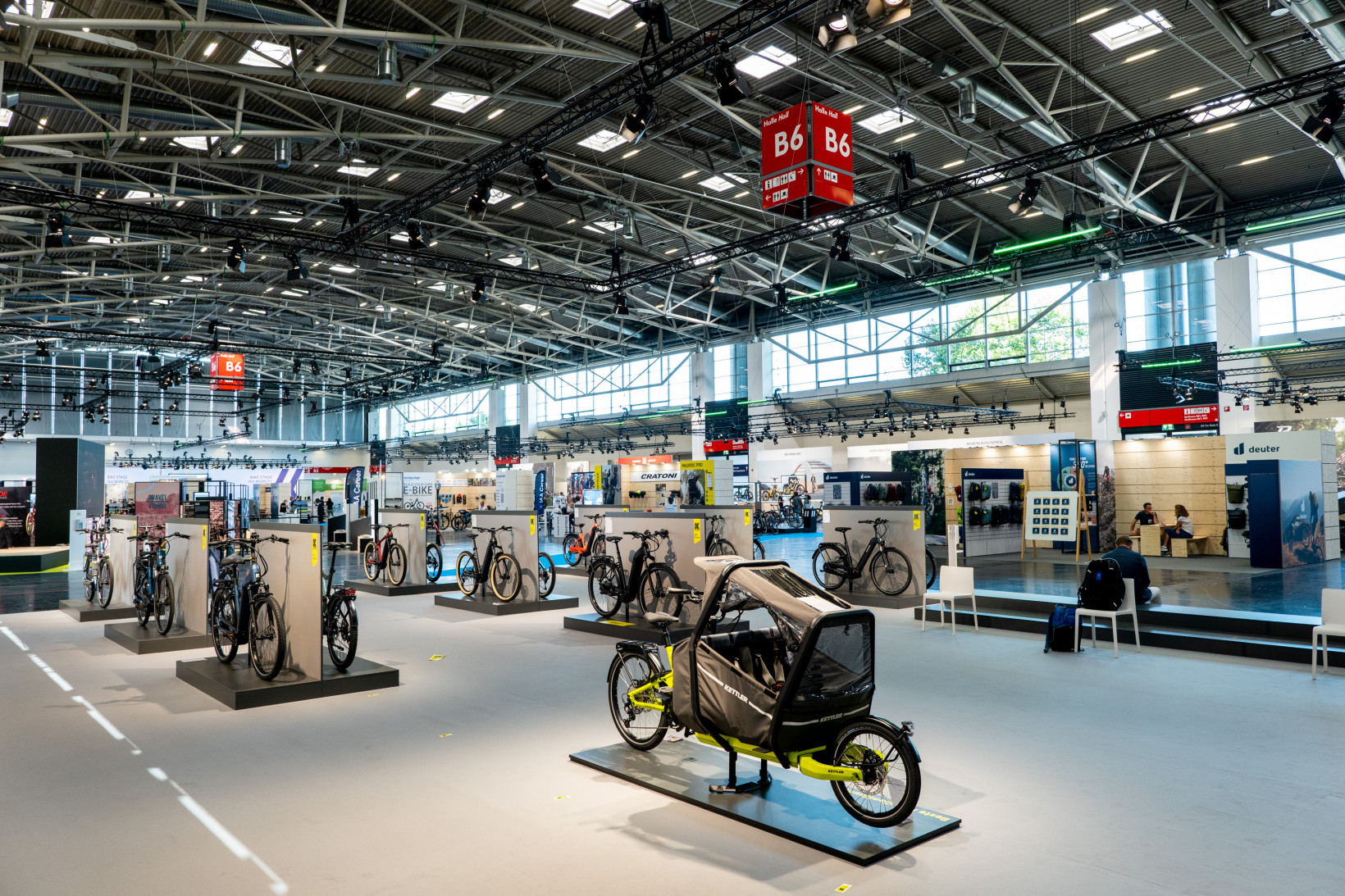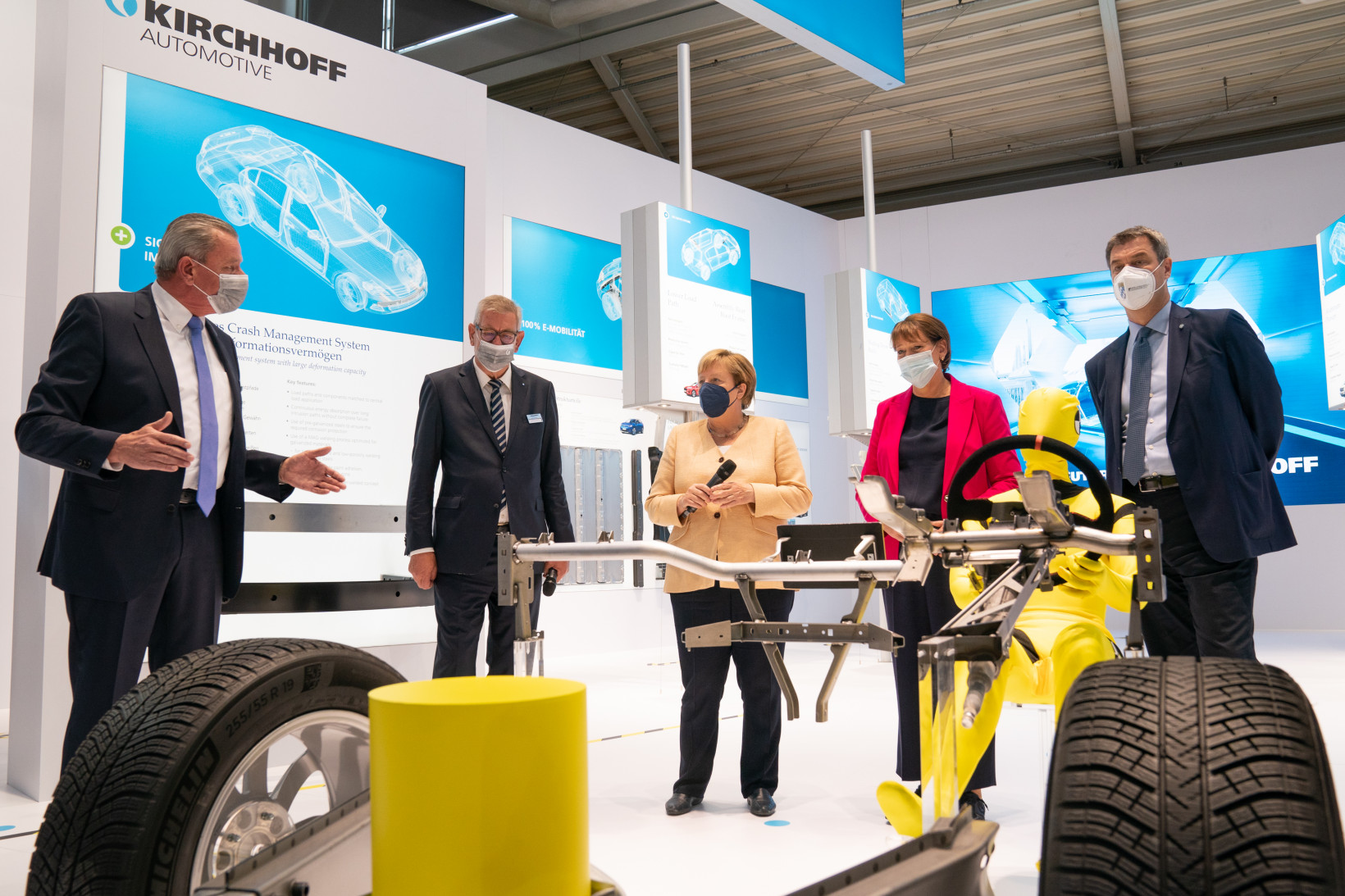Is IAA show still relevant?
It’s possible that, as with events like MWC and IFA here in Europe, plenty of business goes on behind the scenes at IAA. Stallholders hold meetings with each other to talk trade and partnerships.
IAA Mobility provides an opportunity for mobility companies to fly their green flag
If nothing else, many people are suffering from Zoom fatigue. An opportunity, therefore, to fist bump and hand sanitize with a few thousand people while drinking cheap beer is a legitimate enough reason for such as event.
However, the Stellantis group (Peugeot-Fiat-Chrysler), Toyota, and Tesla are notably absent. Instead, the show has a hall of vintage vehicles and toy cars, suggesting a struggle to fill conference floor gaps.
There’s a bounty of alternative vehicles at IAA


I think the biggest winners of the shows are the alternative modes of transport like ebikes, cargo bikes, and emopeds. There are over 70 bikes on show across two halls and an open-air bike circuit where visitors can try out new models on several test tracks. This is a hugely appealing way to make sales.
It’s a necessary pivot. Car OEMs are struggling to win hearts and minds for all their concept cars and latest design features. After all, people are turning towards greener modes of transport.
I predict we’ll see a very different show in about a decade. It’ll be one where carmakers woo fleet operators, not private owners. The core audience will come there to try out alternate modes of transport.
IAA combines sustainability goals with a splash of greenwashing
If you drank a shot every time you heard the words electric vehicle or carbon emissions, you’d be drunk in a minute or two. What we see at IAA is car markers pushing to get ahead to regulators in showcasing the latest electric vehicle and, yes, hydrogen fuel cell vehicles.
It’s no coincidence that Hyundai held their own Hydrogen Wave Forum online yesterday (more on that soon).
Unsurprisingly, the event included a visit by the leader known locally as the “car chancellor” Angela Merkel. She earned the moniker for her efforts to protect German carmakers from tougher EU pollution regulations.
It’s a funny statement considering that VW’s dodgy practices (aka dieselgate) expedited the push towards electrification.
An industry still reeling from dieselgate
German automakers have a sordid history with greenwashing. In 2015, the US Environmental Protection Agency (EPA) found that Volkswagen fitted software to over 11 million diesel vehicles. This allowed them to meet exhaust pollution standards when monitored in tests.
But in real life, their emissions exceeded the limits. Some released up to 40 times more nitrogen oxide than legal limits.
VW offered the affected car ownership compensation, but many pursued civil action to get the total cost of the vehicle they purchased. It left the public deeply distrustful of the carmaker’s claims.
A time of reckoning for the auto industry
According to the European Commission, the automotive sector provides direct and indirect jobs to 13.8 million Europeans, representing 6.1% of total EU employment. Some 2.6 million people work in the direct manufacturing of motor vehicles, representing 8.5% of EU employment in manufacturing.
So, any loss in car manufacturing means a loss in jobs. This will, of course, be less of an issue as the bulk of factory floor roles are phased out by staff retirements, and mechanics hold iPads instead of wrenches. But for now, the automotive sector is hugely influential in Germany.
Carmakers are focusing their energy on two major transitions as they move from diesel to EV and driven to autonomous vehicles.
The IAA offers a space to showcase their collective efforts, even if most people spend their time testing bikes and riding in cargo wagons

